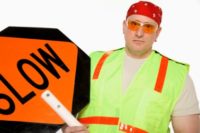The International Safety Equipment Association (ISEA) has received American National Standards Institute (ANSI) approval for ANSI/ISEA 107-2015 American National Standard for High-Visibility Safety Apparel and Accessories, an update to the widely-accepted standard on high-visibility safety apparel. With a few major changes and noteworthy differences, the 2015 version adds “types” to garment descriptions, combines the ANSI/ISEA 107 and 207 standards, and adds a “smallest size” offering.
The latest update was developed by ISEA’s High-Visibility Products Group and approved by key stakeholders representing utility workers, safety professionals, transportation safety experts, testing laboratories and government agencies.
Who is affected
ANSI/ISEA 107 is a voluntary industry consensus standard and has been recognized by federal, state and local authorities as well as private industry. Current U.S. Department of Transportation, Federal Highway Administration (FHWA) regulations have required workers on or near Federal-aid highways to wear Class 2 or Class 3 garments, and the 2009 revision to the Manual on Uniform Traffic Control Devices (MUTCD) extends this provision to workers on all roadways in the United States.
The updated standard consolidates the requirements of ANSI/ISEA 107-2010 and ANSI/ISEA 207, American National Standard for Public Safety Vests in an effort to establish a single, comprehensive document that considers all occupational tasks. While still preserving the performance class designation based on material minimum areas, the updated standard identify garment types based on expected use settings and work activities being performed, these are designated as off-road (type O), roadway and temporary traffic control (type R), or public safety activities (type P).
Fit and comfort of high-visibility safety apparel play an important role in worker acceptance of wearing these items as part of their daily activity. While previous editions provided some freedom in design that resulted in smaller sized garments capable of meeting the standard’s requirements, specifiers and users wearing garments classified as Performance Class 2 under the ANSI/ISEA 107-2010 standard edition had expressed concern regarding appropriately fitting compliant garments for smaller sized workers.
Why fit matters
Garments that are not properly sized to fit can expose workers to catch hazards or interfere with other protective gear, potentially compromising worker safety. In response, the ANSI/ISEA 107-2015 standard edition now includes provisions for Type R Performance Class 2 and Performance Class 3 garments in the smallest size offered to utilize a reduced amount of background material to allow for sizing more appropriate for smaller workers.Additionally and in recognizing the growing use of high-visibility accessory items, the 2015 standard adds specifications for accessories including headwear, gloves and armbands. ANSI/ISEA 107-2015 also specifies labeling requirements to identify the garment by performance class, type and by its flame resistance characteristics as defined in the standard and expands the examples of garment configurations to illustrate compliant and non-compliant designs.
Additionally and in recognizing the growing use of high-visibility accessory items, the 2015 standard adds specifications for accessories including headwear, gloves and armbands. ANSI/ISEA 107-2015 also specifies labeling requirements to identify the garment by performance class, type and by its flame resistance characteristics as defined in the standard and expands the examples of garment configurations to illustrate compliant and non-compliant designs.
A serious danger
“Low visibility is one of the most serious dangers on a jobsite, said Richard McNeely, chairman of the ISEA High-Visibility Products Group and market manager of ORAFOL Americas Inc. “ISEA’s High-Visibility Products Group members remain committed to ensuring that the updates in the revision serve to meet end user needs by considering all occupational tasks and hazards and to ensure garments provide visibility of the worker from either side: front or back,” said Rich.
To comply with ANSI/ISEA 107-2015, a garment’s background material, and retroreflective or combined-performance material, must be tested by an accredited laboratory. The manufacturer of the finished item then verifies that the garment or headwear meets all the requirements of the standard, and provides a Declaration of Conformity for each model. The Declaration of Conformity and examples of test forms are included in the standard and are also available on the ISEA website.
About ISEA
ISEA is the association for personal protective equipment and technologies – equipment and systems that enable people to work in hazardous environments. For more than 75 years, ISEA has set the standard for personal protective technologies, supporting the interests of its member companies who are united in the goal of protecting the health and safety of people worldwide. ISEA is a recognized leader in the development of safety equipment standards, in the U.S. and around the world. It works with Congress and government agencies to consult with policy makers whose decisions affect the industry. It is a forum for information sharing and industry action, providing market insight and advocating for the use of personal safety equipment to keep workers safe. For more information visit: www.safetyequipment.org.



